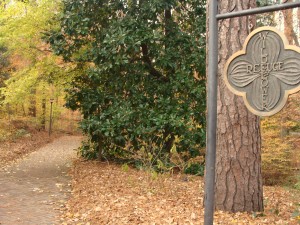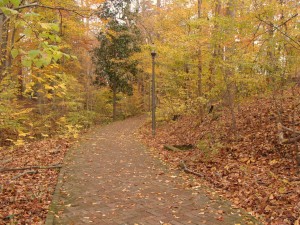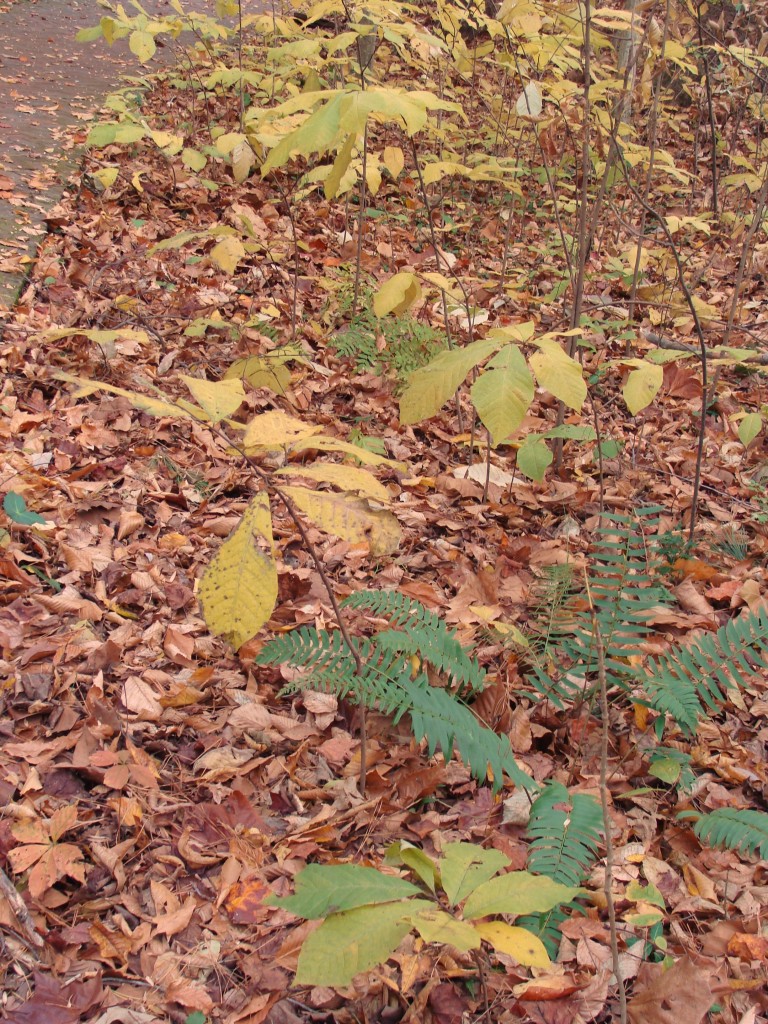The Secrets of William and Mary Part 2: The Wildlife Refuge
November 16, 2009
When walking down to the Crim Dell, it’s not hard to see just how modern the College of William and Mary has become. On the one hand, is the new Integrated Science Center, looming ahead with four floors of new equipment for the upcoming chemistry student. But on the other hand, it’s hard to ignore the College’s roots just by looking at the Crim Dell bridge, a gift from the Class of 1964, and a relic of sorts of the College’s long forgotten past.

This sign, signifying the entrance to the Refuge, can be found across from the Crim Dell.
Every day, hundreds of William and Mary students pass by the sign for the Wildflower Refuge, but if you ask any student what the refuge is, you would get a variety of convoluted, different answers. Up until recently, even I believed that the refuge referred to the small, wooden amphitheater that had been built across from the Crim Dell. (Which actually was, to a certain extent, correct, but was not the entire story.)
So what exactly is the Wildflower Refuge and what significance does it play to William and Mary as a whole?
My investigations first started out by exploring Swem Library’s Special Collections Library for any sign of Wildflower Refuge. Although there were no direct entries regarding the refuge itself, there were many secondary entries that referred to the actual refuge.

The trail in the fall reveals a tunnel of yellows, reds and oranges.
It turns out that the Wildflower Refuge refers not only to the amphitheater, (which is so appropriately named the “Wildflower Refuge Amphitheater” but it also refers to the old brick trail that leads down about an eighth of a mile before it finally joins up with the paved asphalt trail.
It also turns out that the trail is home to several varieties of trillium, a type of perennial flowering plant, ferns, and
wildflowers. Also, as decreed by the “Wildflower Refuge Committee,” a group of individuals established by the College’s Board of Visitors in 1976, whenever the College does construction in any part of campus, any rare plants endangered by the construction are transplanted at the Refuge. A resolution passed in the same year by the Board of Visitors at the time specifically ordered the Refuge to be one of the few areas on campus kept in the state that it was originally found before construction.

Some of the rare ferns that can be seen growing along the trail.
Of course, the next thing to do was to explore the trail itself. Made of brick from an unknown time, the Refuge trail winds along a small stream opposite to the more modern, wider asphalt trail. During the fall, the trees that tower over the refuge trail turn colors, revealing a smoothing tunnel of foliage.
But a closer look at the trail also reveals just exactly the types of flora that exist among this trail. Ferns are definitely present, but so are other, lesser known plants that would make it a field day for any botanist.
It’s nice that the in the middle of all the modernity and construction, William and Mary has reserved a space that has been suspended and freed from the constraints of time. It is this pausing of time, of sorts, or perhaps simply the fact that the world will forever develop around it, that really makes the Wildflower Refuge a “Refuge.”




No comments.
Comments are currently closed. Comments are closed on all posts older than one year, and for those in our archive.